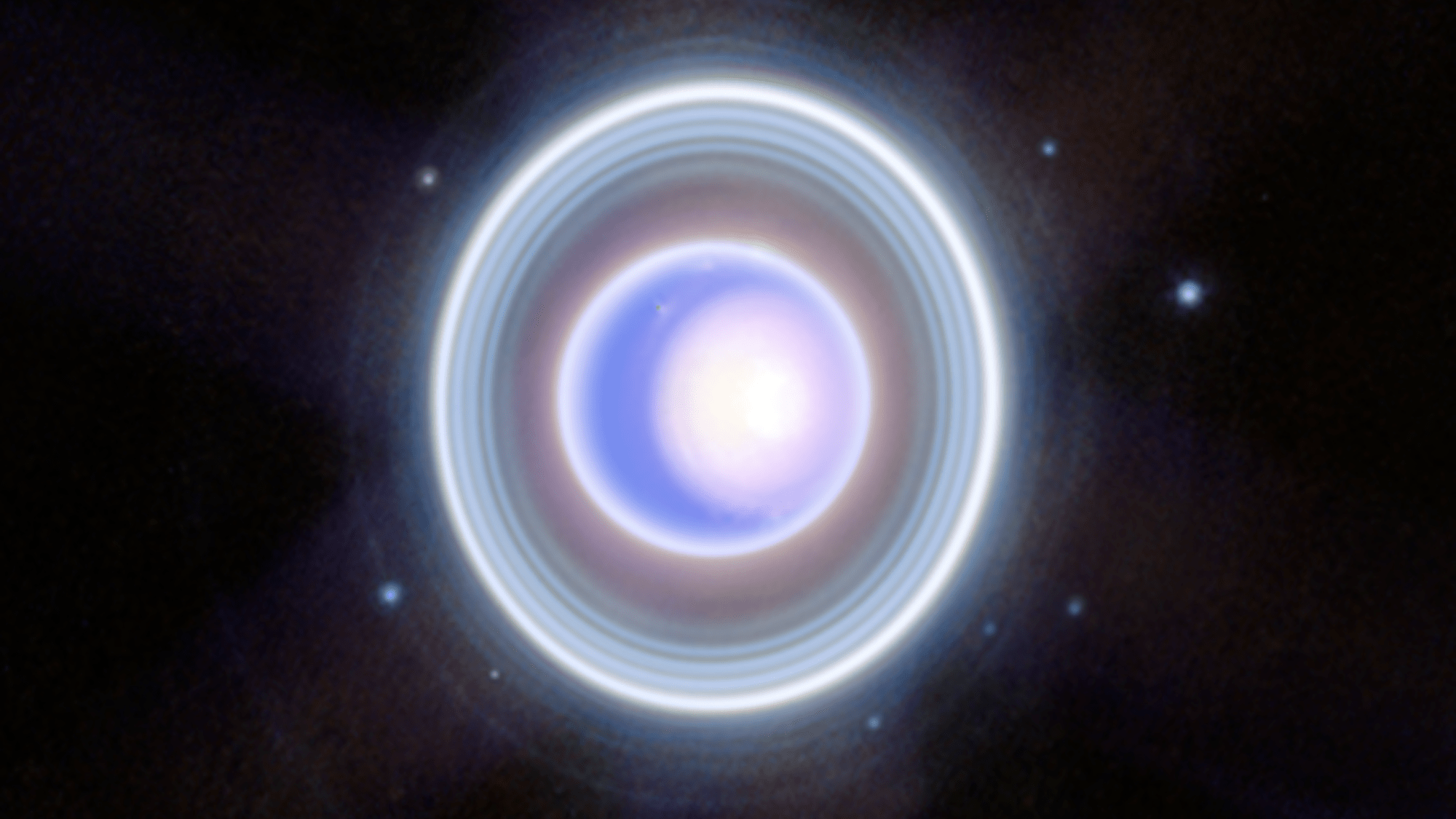Uranus may have gained a new moon, bringing its total known satellites to 29. Observations from the James Webb Space Telescope (JWST) detected this small celestial body, temporarily designated as S/2025 U1, earlier this year. While the data is undergoing the peer review process, initial findings suggest it is indeed a new addition to the ice giant’s complex system.
The first hints of the moon’s existence emerged on February 2 when JWST focused its Near-Infrared Camera (NIRCam) on Uranus, capturing a series of ten exposures, each lasting 40 minutes. Subsequent analysis indicates that S/2025 U1 is a small satellite among the 14 known moons that orbit closer to Uranus than the larger moons, such as Ariel and Titania.
According to SETI Institute researcher Matthew Tiscareno, “No other planet has as many small inner moons as Uranus, and their complex inter-relationships with the rings hint at a chaotic history that blurs the boundary between a ring system and a system of moons.” This statement reflects the intricate dynamics of the Uranian moon system.
The newly identified moon is estimated to be approximately six miles in diameter, significantly smaller than many of its siblings. For context, this size is less than one-third that of New York City’s width. Its lower solar reflectivity, or albedo, may explain why the Voyager 2 spacecraft did not detect it during its flyby in January 1986.
Astronomer Maryame El Moutamid from the Southwest Research Institute noted that S/2025 U1 is located about 35,000 miles from Uranus’ center, orbiting within the equatorial plane between the moons Ophelia and Bianca. “Its nearly circular orbit suggests it may have formed near its current location,” she added.
The discovery of S/2025 U1 adds to the intrigue surrounding Uranus. The moon’s faintness compared to the existing inner moons indicates that more complexities may yet be uncovered. “The new moon is smaller and much fainter than the smallest of the previously known inner moons,” Tiscareno stated, expressing optimism for future discoveries.
The most recent moon discovered before S/2025 U1 was designated as S/2023 U1, highlighting the ongoing exploration of Uranus and its satellites. Both moons will retain their provisional designations until the International Astronomical Union approves new names, which are likely to draw inspiration from literary figures such as those created by William Shakespeare or Alexander Pope.
As observations and analyses continue, the scientific community remains eager to learn more about this potential new moon and the broader implications for our understanding of Uranus and its unique satellite system.
